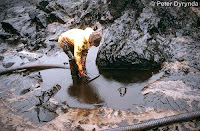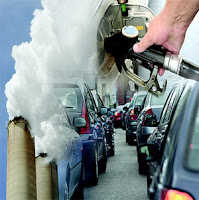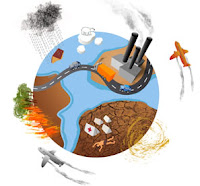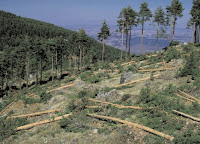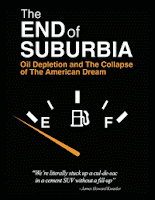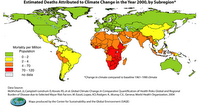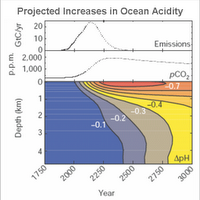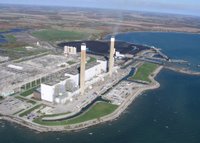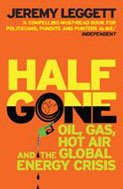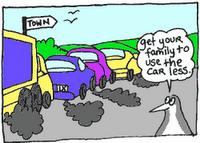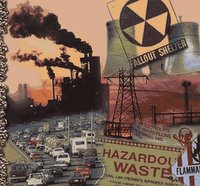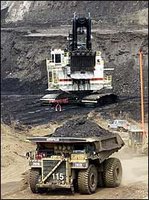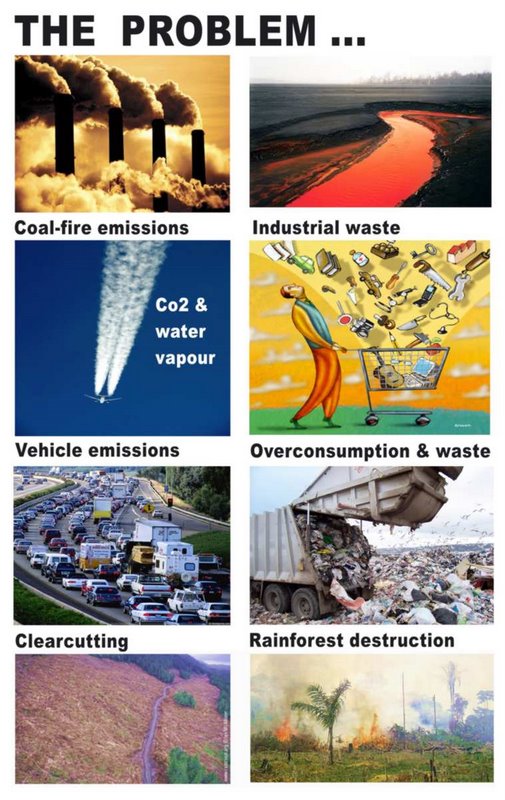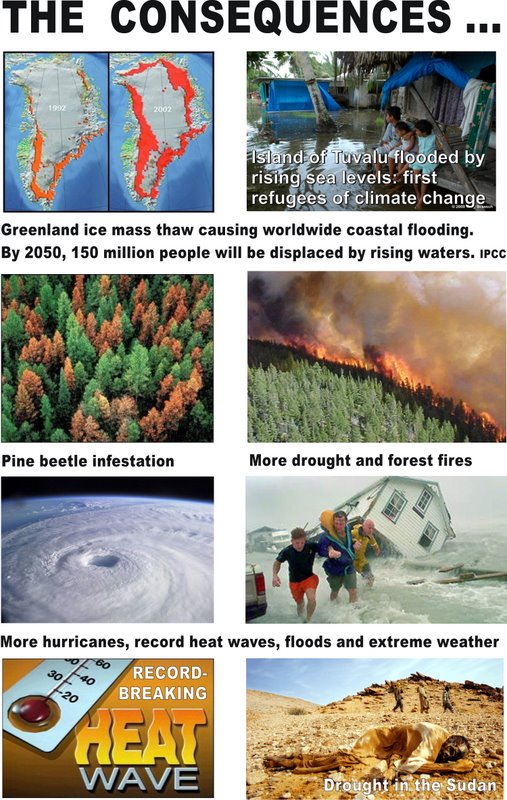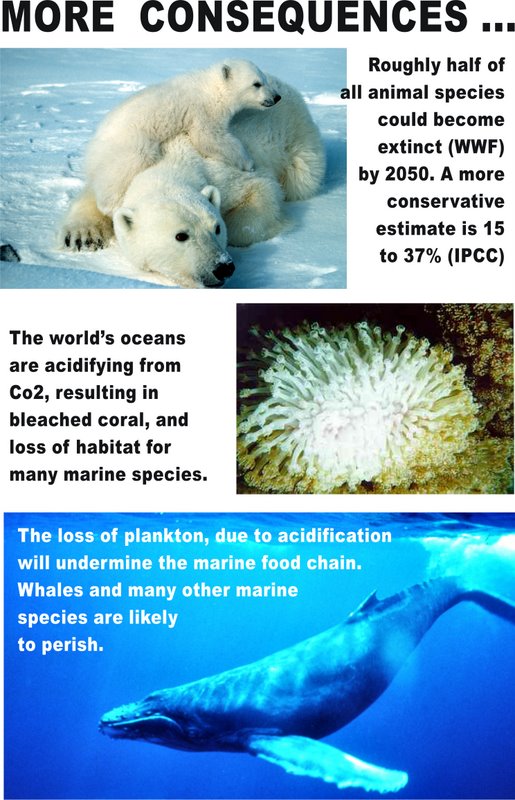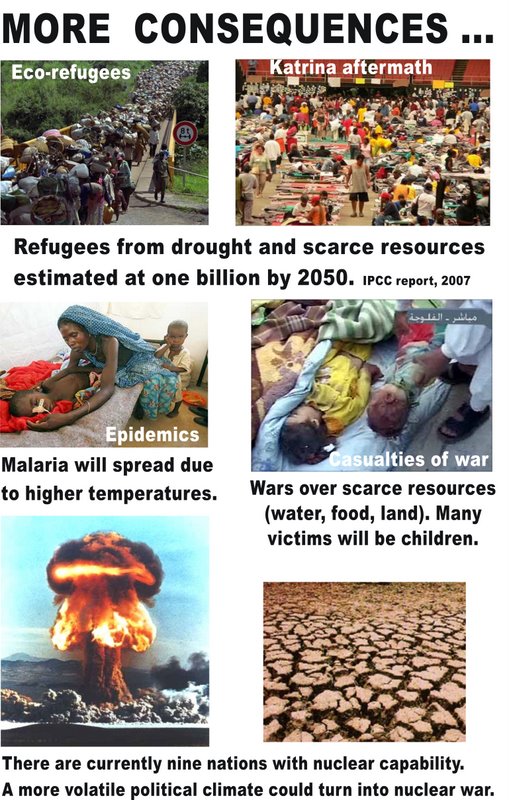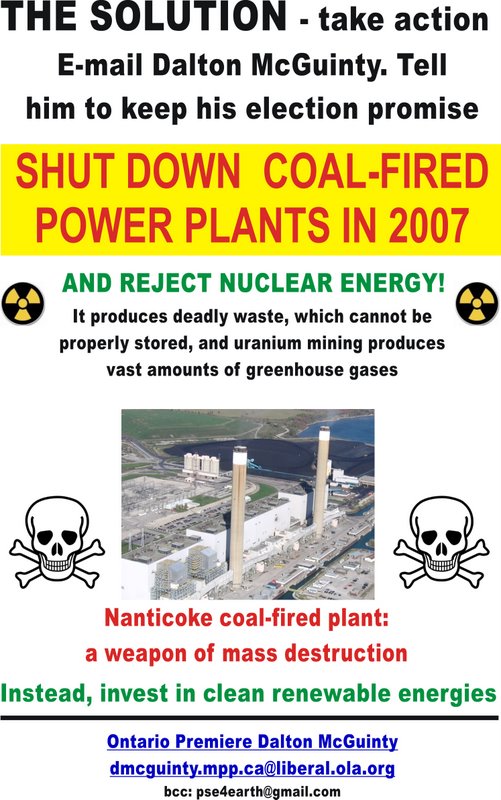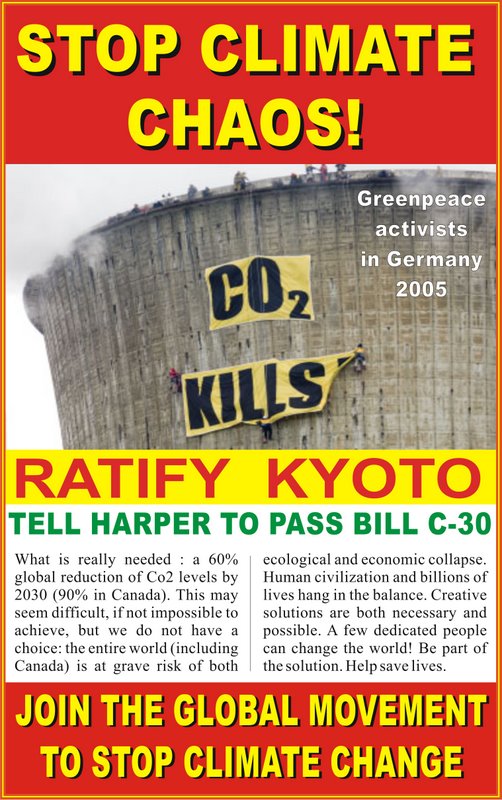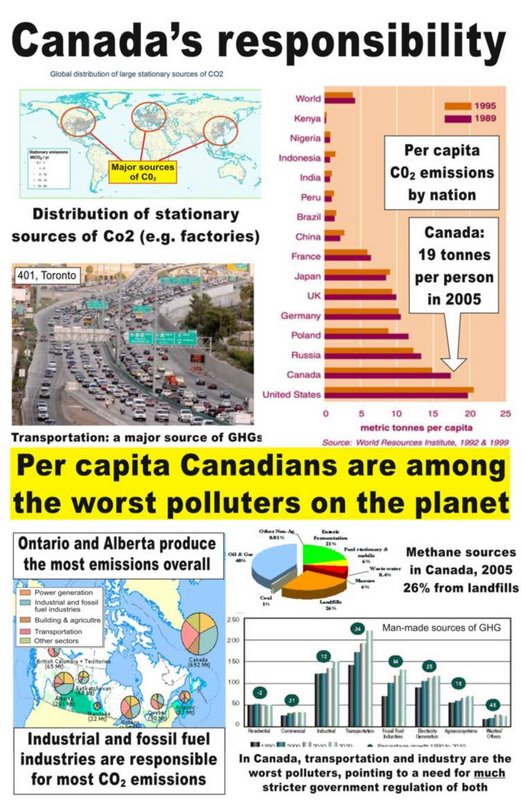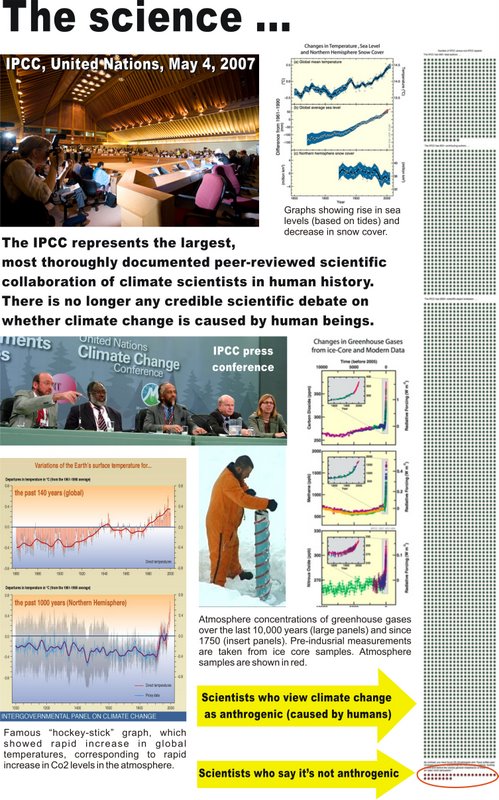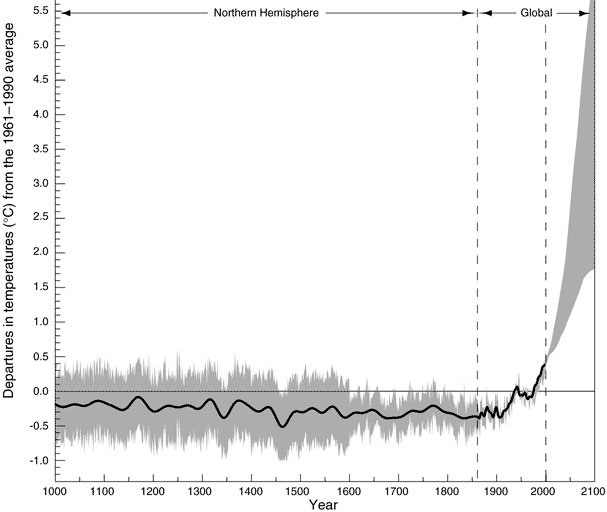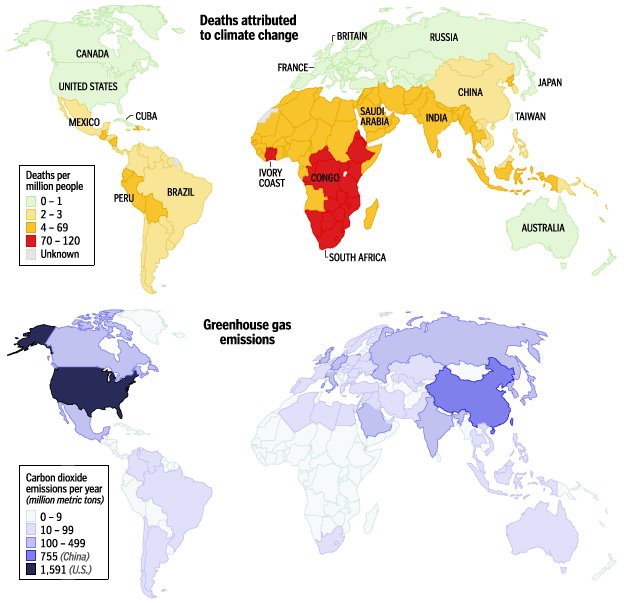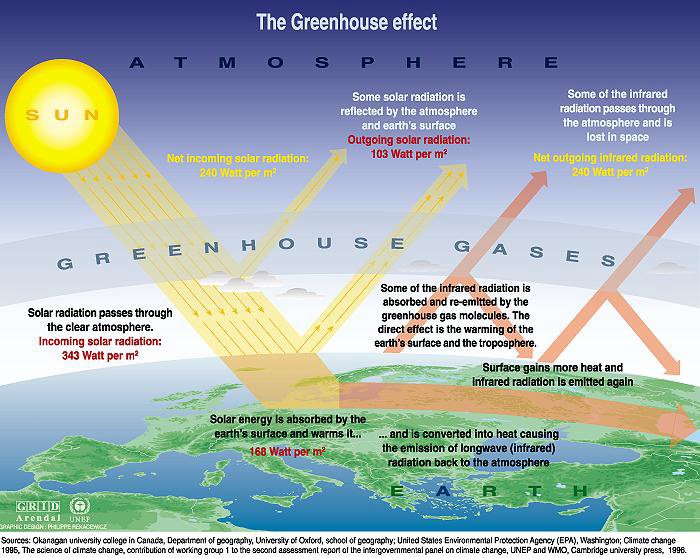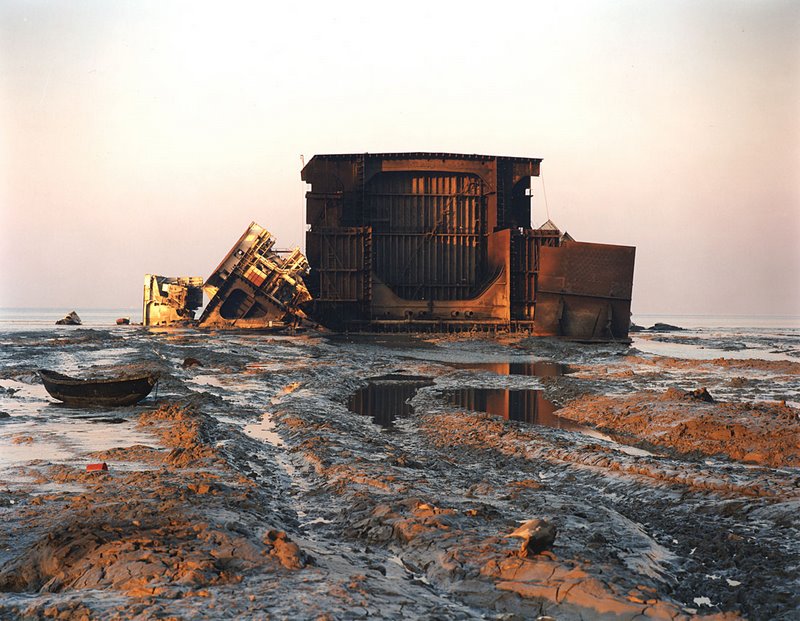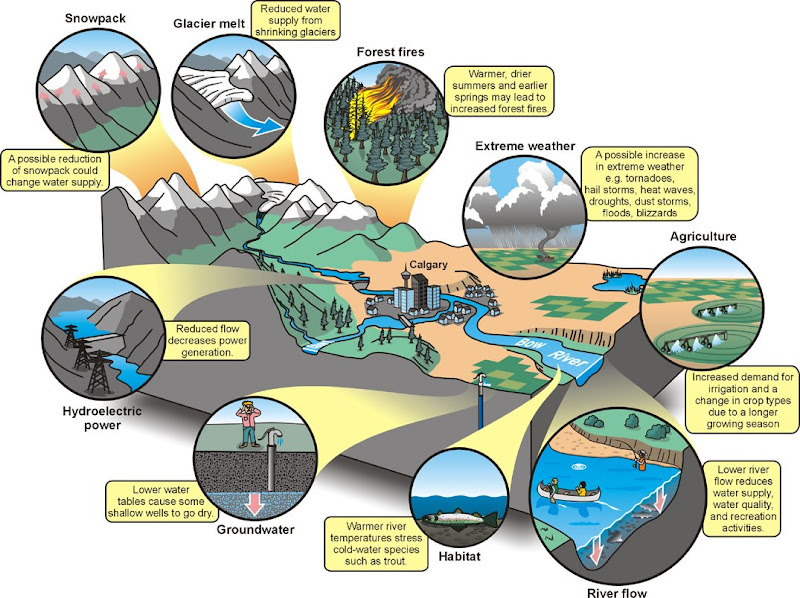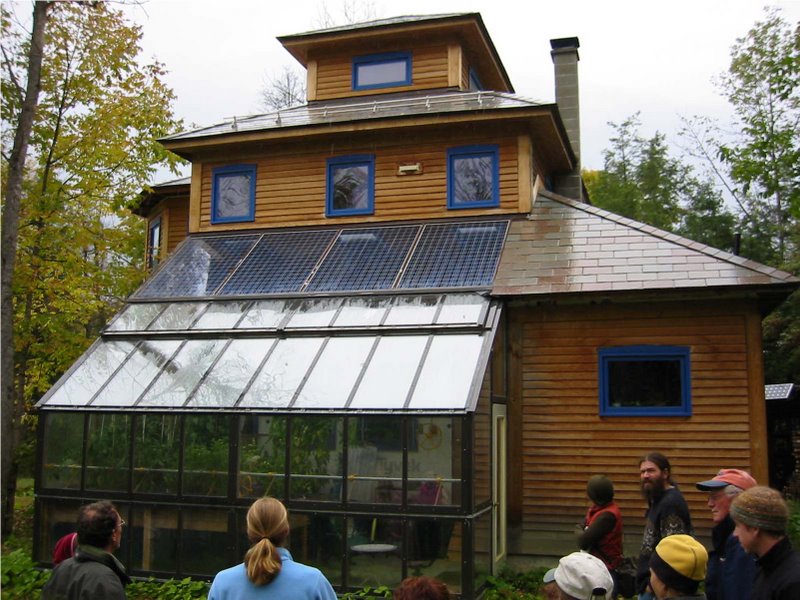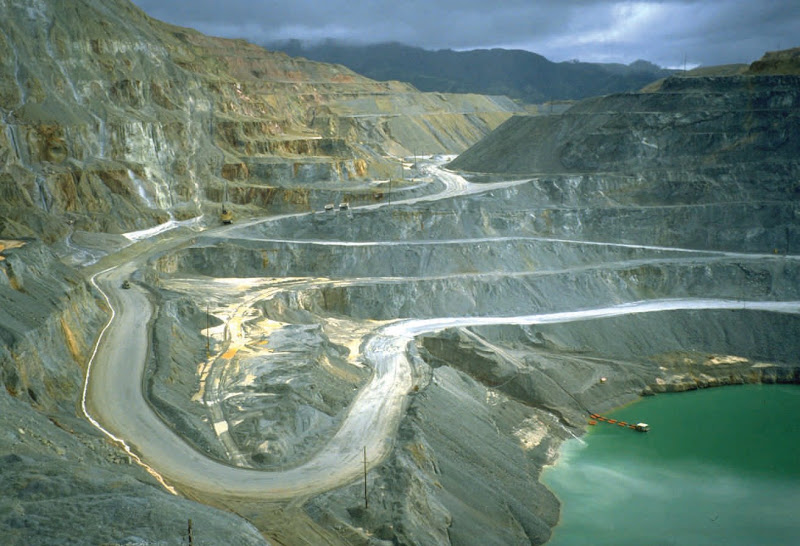A new paper suggests we have been greatly underestimating the impacts of climate change – and the size of the necessary response. By George Monbiot. Published in the Guardian 3rd July 2007 See http://www.monbiot.com
A scientific paper by James Hansen at NASA suggests that the grim reports issued by the Intergovernmental Panel on Climate Change could be absurdly optimistic. The IPCC predicts that sea levels could rise by as much as 59cm this century. Hansen’s paper argues that the slow melting of ice sheets the panel expects doesn’t fit the data. The geological record suggests that ice at the poles does not melt in a gradual and linear fashion, but flips suddenly from one state to another. When temperatures increased to 2-3 degrees above today’s level 3.5 million years ago, sea levels rose not by 59 centimetres but by 25 metres. The ice responded immediately to changes in temperature.
We now have a pretty good idea of why ice sheets collapse. The buttresses that prevent them from sliding into the sea break up; meltwater trickles down to their base, causing them suddenly to slip; and pools of water form on the surface, making the ice darker so that it absorbs more heat. These processes are already taking place in Greenland and West Antarctica.
Rather than taking thousands of years to melt, as the IPCC predicts, Hansen and his team find it “implausible” that the expected warming before 2100 “would permit a West Antarctic ice sheet of present size to survive even for a century.” As well as drowning most of the world’s centres of population, a sudden disintegration could lead to much higher rises in global temperature, because less ice means less heat reflected back into space. The new paper suggests that the temperature could therefore be twice as sensitive to rising greenhouse gases than the IPCC assumes.

Caption: map of projected sea leval rise on the West coast of Canada. See press release from Sierra Club explaining map.
“Civilization developed,” Hansen writes, “during a period of unusual climate stability, the Holocene, now almost 12,000 years in duration. That period is about to end.”
I looked up from the paper, almost expecting to see crowds stampeding through the streets. I saw people chatting outside a riverside pub. The other passengers on the train snoozed over their newspapers or played on their mobile phones. Unaware of the causes of our good fortune, blissfully detached from their likely termination, we drift into catastrophe . . .
If Hansen is correct, to avert the meltdown that brings the Holocene to an end we require a response on this scale: a sort of political “albedo flip”. The government must immediately commission studies to discover how much of our energy could be produced without fossil fuels, set that as its target then turn the economy round to meet it. But a power shift like this cannot take place without a power shift of another kind: we need a government which fears planetary meltdown more than it fears the CBI.

Book review: The Creation by Edward O. Wilson
Published in September 2006 by W.W. Norton
In his latest book, world-renowned biologist and evolutionary scientist Edward O. Wilson, makes a case for why saving "The Creation", i.e., Nature and the millions of species that inhabit it, are of paramount importance to humans and our future generations.
The reasons for the decline of Earth's biodiversity, Edward Wilson writes, are known in scientific circles by the acronym HIPPO, listed in order of destructiveness:
* habitat loss, including that caused by human-induced climate change
* invasive species (harmful aliens, including predators, disease organisms, and dominant competitors that displace natives)
* pollution
* human overpopulation, a root cause of the other four factors
* overharvesting (hunting, fishing, gathering)
Wilson makes the case, that even though their views may differ on the origin of the Creation and Homo sapiens, they must put their differences aside to save Earth's living diversity, a goal which he believes they share. If we go back in history, the problem started when "civilization was purchased by the betrayal of Nature." Wilson writes:
"According to archeological evidence, we strayed from Nature with the beginning of civilization roughly ten thousand years ago. That quantum leap beguiled us with an illusion of freedom from the world that had given us birth. It nourished the belief that the human spirit can be molded in to something new to fit changes in the environment and culture, and as a result the timetables of history desynchronized.
A wiser intelligence might now truthfully say of us at this point: here is a chimera, a new and very odd species come shambling into our universe, a mix of Stone Age emotion, medieval self-image, and godlike technology. The combination makes the species unresponsive to the forces that count most for its own long-term survival."
The Neolithic revolution, comprising the invention of agriculture and villages, fed on Nature's bounty. The forward leap was a blessing for humanity. Yes, it was: those who have lived among hunter-gatherers will tell you they are not at all to be envied. But the revolutions encouraged the false assumption that a tiny selection of domesticated plants and animals can support human expansion indefinitely. The pauperization of Earth's fauna and flora was an acceptable price until recent centuries, when Nature seemed all but infinite, and an enemy to explorers and pioneers. The wilderness and the aboriginal surviving in them were there to be pushed back and eventually replaced, in the name of progress and in the name of the gods, lest we forget.

History now teaches a different lesson, but only to those who will listen. Even if the rest of life is counted of no value beyond the satisfaction of human bodily needs, the obliteration of Nature is a dangerous strategy. For one thing, we have become a species specialized to eat the seeds of four kinds of grass-wheat, rice, corn, and millet. If these fail, from disease or climate change, we too shall fail. Some fifty thousand wild plant species (many of which face extinction) offer alternative food sources. If one insists on being thoroughly practical about the matter, allowing these and the rest of wild species to exist should be considered part of a portfolio of long-term investment. Even the most recalcitrant people must come to view conservation as a simple prudence in the management of Earth's natural economy. Yet few have begun to think that way at all.
Meanwhile, the modern technoscientific revolution, including especially the great leap forward of computer-based information technology, has betrayed Nature a second time, by fostering the belief that the cocoons of urban and suburban material life are sufficient for human fulfillment. That is an especially serious mistake. Human nature is deeper and broader than the artifactual contrivance of any existing culture. The spiritual roots of Homo sapiens extend deep into the natural world through still mostly hidden channels of mental development. We will not reach our full potential without understanding the origin and hence meaning of the aesthetic and religious qualities that make us ineffably human.
Granted, many people seem content to live entirely within the synthetic ecosystems. But so are domestic animals content, even in the grotesquely abnormal habitats in which we rear them. This in my mind is a perversion. It is not the nature of human beings to be cattle in glorified feedlots. Every person deserves the option to travel easily in and out of the complex and primal world that gave us birth. We need freedom to roam across land owned by no one but protected by all, whose unchanging horizon is the same that bounded the world of our millennial ancestors. Only in what remains of Eden, teeming with life forms independent of us, is it possible to experience the kind of wonder that shaped the human psyche at its birth."
Thus, Wilson describes why we should all care about saving Nature, and how human nature is intertwined with it. He goes on to explain the extent of the damage done so far and unless we take concrete steps now (more thoroughly explained in The Future of Life/evolutionbookreviews/futureoflife.htm), likely to happen in the near future: an extinction of half of the Earth's living species by the end of this century. This is where he needs the Pastor's help, Edward Wilson writes, because religion plays such an important part in the fabric of society and politics, especially in the United Sates. Edward Wilson ends by writing,
"What are we to do? Forget the differences, I say. Meet on common ground. That might not be as difficult as it seems at first. When you think about it, our metaphysical differences have remarkably little effect on the conduct of our separate lives. My guess is that you and I are about equally ethical, patriotic, and altruistic. We are products of a civilization that arose from both religion and the science-based Enlightenment. We would gladly serve on the same jury, fight the same wars, sanctify human life with the same intensity. And surely we also share a love of the Creation.
"In closing this letter, I hope you will not have taken offense when I spoke of ascending to Nature instead of ascending away from it. It would give me deep satisfaction to find that expression as I have explained it compatible with your own beliefs. For however the tensions eventually play out between our opposing worldviews, however science and religion wax and wane in the minds of men, there remains the earthborn, yet transcendental, obligation we are both morally bound to share."
The Creation is a very important book because if we are to take a long-term view of humanity, it is the most important issue facing us today. Indeed, his quote from 1980 (Harvard Magazine, January/February 1980) still serves true today if we continue on our current path of destruction:
"The worst thing that can happen, will happen, is not energy depletion, economic collapse, limited nuclear war, or conquest by a totalitarian government. As terrible as these catastrophes would be for us, they can be repaired within a few generations. The one process ongoing in the 1980s that will take millions of years to correct is the loss of genetic and species diversity by the destruction of natural habitats. This is the folly our descendants are least likely to forgive us."
EDWARD O. WILSON is Pellegrino University Professor at Harvard University. In addition to two Pulitzer Prizes (one of which he shares with Bert Hölldobler), Wilson has won many scientific awards, including the National Medal of Science and the Crafoord Prize of the Royal Swedish Academy of Sciences.
_________________________________________
Climate change can't wait: a summary of the Stern report
A report by economist Sir Nicholas Stern suggests that global warming could shrink the global economy by 20%. But taking action now would cost just 1% of global gross domestic product, the 700-page study says. Tony Blair said the Stern Review showed that scientific evidence of global warming was "overwhelming" and its consequences "disastrous".
The review coincides with the release of new data by the United Nations showing an upward trend in emission of greenhouse gases - a development for which Sir Nicholas said that rich countries must shoulder most of the responsibility. "Whilst there is much more we need to understand - both in science and economics - we know enough now to be clear about the magnitude of the risks, the timescale for action and how to act effectively," Sir Nicholas said. "That's why I'm optimistic - having done this review - that we have the time and knowledge to act. But only if we act internationally, strongly and urgently." Mr Blair said the consequences for the planet of inaction were "literally disastrous.” The Stern report and IPCC warn that if no action is taken:
“One degree and we’re done for”
"Further global warming of 1 °C defines a critical threshold. Beyond that we will likely see changes that make Earth a different planet than the one we know." So says Jim Hansen, director of NASA's Goddard Institute for Space Studies in New York. Hansen and colleagues have analysed global temperature records and found that surface temperatures have been increasing by an average of 0.2 °C every decade for the past 30 years.
Warming is greatest in the high latitudes of the northern hemisphere, particularly in the sub-Arctic boreal forests of Siberia and North America. Here the melting of ice and snow is exposing darker surfaces that absorb more sunlight and increase warming, creating a positive feedback. Earth is already as warm as at any time in the last 10,000 years, and is within 1 °C of being its hottest for a million years, says Hansen's team.
Another decade of business-as-usual carbon emissions will probably make it too late to prevent the ecosystems of the north from triggering runaway climate change, the study concludes (Proceedings of the National Academy of Sciences, vol 103, p 14288).
Excerpt from the STERN REVIEW: The Economics of Climate Change
Summary of Conclusions
There is still time to avoid the worst impacts of climate change, if we take
strong action now.
The scientific evidence is now overwhelming: climate change is a serious global
threat, and it demands an urgent global response.
This Review has assessed a wide range of evidence on the impacts of climate
change and on the economic costs, and has used a number of different techniques to
assess costs and risks. From all of these perspectives, the evidence gathered by the
Review leads to a simple conclusion: the benefits of strong and early action far
outweigh the economic costs of not acting.
Climate change will affect the basic elements of life for people around the world –
access to water, food production, health, and the environment. Hundreds of millions
of people could suffer hunger, water shortages and coastal flooding as the world
warms.
Using the results from formal economic models, the Review estimates that if we don’t
act, the overall costs and risks of climate change will be equivalent to losing at least 5% of global GDP each year, now and forever. If a wider range of risks and impacts is taken into account, the estimates of damage could rise to 20% of GDP or more.
In contrast, the costs of action – reducing greenhouse gas emissions to avoid the
worst impacts of climate change – can be limited to around 1% of global GDP each
year.
The investment that takes place in the next 10-20 years will have a profound effect
on the climate in the second half of this century and in the next. Our actions now and over the coming decades could create risks of major disruption to economic and
social activity, on a scale similar to those associated with the great wars and the
economic depression of the first half of the 20th century. And it will be difficult or impossible to reverse these changes.
So prompt and strong action is clearly warranted. Because climate change is a
global problem, the response to it must be international. It must be based on a
shared vision of long-term goals and agreement on frameworks that will accelerate
action over the next decade, and it must build on mutually reinforcing approaches at
national, regional and international level.
Climate change could have very serious impacts on growth and development.
If no action is taken to reduce emissions, the concentration of greenhouse gases in
the atmosphere could reach double its pre-industrial level as early as 2035, virtually committing us to a global average temperature rise of over 2°C. In the longer term, there would be more than a 50% chance that the temperature rise would exceed 5°C. This rise would be very dangerous indeed; it is equivalent to the change in average temperatures from the last ice age to today. Such a radical change in the
physical geography of the world must lead to major changes in the human geography
– where people live and how they live their lives.
Even at more moderate levels of warming, all the evidence – from detailed studies of
regional and sectoral impacts of changing weather patterns through to economic models of the global effects – shows that climate change will have serious impacts on world output, on human life and on the environment. All countries will be affected. The most vulnerable – the poorest countries and populations – will suffer earliest and most, even though they have contributed least to the causes of climate change. The costs of extreme weather, including floods, droughts and storms, are already rising, including for rich countries.
Adaptation to climate change – that is, taking steps to build resilience and minimise
costs – is essential. It is no longer possible to prevent the climate change that will take place over the next two to three decades, but it is still possible to protect our societies and economies from its impacts to some extent – for example, by providing better information, improved planning and more climate-resilient crops and infrastructure. Adaptation will cost tens of billions of dollars a year in developing countries alone, and will put still further pressure on already scarce resources. Adaptation efforts, particularly in developing countries, should be accelerated.
The costs of stabilising the climate are significant but manageable; delay
would be dangerous and much more costly.
The risks of the worst impacts of climate change can be substantially reduced if
greenhouse gas levels in the atmosphere can be stabilised between 450 and
550ppm CO2 equivalent (CO2e). The current level is 430ppm CO2e today, and it is
rising at more than 2ppm each year. Stabilisation in this range would require
emissions to be at least 25% below current levels by 2050, and perhaps much more.
Ultimately, stabilisation – at whatever level – requires that annual emissions be
brought down to more than 80% below current levels.
This is a major challenge, but sustained long-term action can achieve it at costs that are low in comparison to the risks of inaction. Central estimates of the annual costs of achieving stabilisation between 500 and 550ppm CO2e are around 1% of global
GDP, if we start to take strong action now.
Costs could be even lower than that if there are major gains in efficiency, or if the
strong co-benefits, for example from reduced air pollution, are measured. Costs will
be higher if innovation in low-carbon technologies is slower than expected, or if
policy-makers fail to make the most of economic instruments that allow emissions to
be reduced whenever, wherever and however it is cheapest to do so.
It would already be very difficult and costly to aim to stabilise at 450ppm CO2e. If we delay, the opportunity to stabilise at 500-550ppm CO2e may slip away.
Action on climate change is required across all countries, and it need not cap
the aspirations for growth of rich or poor countries.
The costs of taking action are not evenly distributed across sectors or around the
world. Even if the rich world takes on responsibility for absolute cuts in emissions of 60-80% by 2050, developing countries must take significant action too. But
developing countries should not be required to bear the full costs of this action alone, and they will not have to. Carbon markets in rich countries are already beginning to deliver flows of finance to support low-carbon development, including through the Clean Development Mechanism. A transformation of these flows is now required to support action on the scale required.
Action on climate change will also create significant business opportunities, as new
markets are created in low-carbon energy technologies and other low-carbon goods
and services. These markets could grow to be worth hundreds of billions of dollars
each year, and employment in these sectors will expand accordingly.
The world does not need to choose between averting climate change and promoting
growth and development. Changes in energy technologies and in the structure of
economies have created opportunities to decouple growth from greenhouse gas
emissions. Indeed, ignoring climate change will eventually damage economic growth.
Tackling climate change is the pro-growth strategy for the longer term, and it can be
done in a way that does not cap the aspirations for growth of rich or poor countries.
A range of options exists to cut emissions; strong, deliberate policy action is
required to motivate their take-up.
Emissions can be cut through increased energy efficiency, changes in demand, and
through adoption of clean power, heat and transport technologies. The power sector
around the world would need to be at least 60% decarbonised by 2050 for
atmospheric concentrations to stabilise at or below 550ppm CO2e, and deep
emissions cuts will also be required in the transport sector.
Even with very strong expansion of the use of renewable energy and other lowcarbon
energy sources, fossil fuels could still make up over half of global energy
supply in 2050. Coal will continue to be important in the energy mix around the
world, including in fast-growing economies. Extensive carbon capture and storage
will be necessary to allow the continued use of fossil fuels without damage to the
atmosphere.
Cuts in non-energy emissions, such as those resulting from deforestation and from
agricultural and industrial processes, are also essential.
With strong, deliberate policy choices, it is possible to reduce emissions in both
developed and developing economies on the scale necessary for stabilisation in the
required range while continuing to grow.
Climate change is the greatest market failure the world has ever seen, and it
interacts with other market imperfections. Three elements of policy are required for
an effective global response. The first is the pricing of carbon, implemented through
tax, trading or regulation. The second is policy to support innovation and the
deployment of low-carbon technologies. And the third is action to remove barriers to
energy efficiency, and to inform, educate and persuade individuals about what they
can do to respond to climate change.
Climate change demands an international response, based on a shared
understanding of long-term goals and agreement on frameworks for action.
Many countries and regions are taking action already: the EU, California and China
are among those with the most ambitious policies that will reduce greenhouse gas
emissions. The UN Framework Convention on Climate Change and the Kyoto
Protocol provide a basis for international co-operation, along with a range of
partnerships and other approaches. But more ambitious action is now required
around the world.
Countries facing diverse circumstances will use different approaches to make their
contribution to tackling climate change. But action by individual countries is not
enough. Each country, however large, is just a part of the problem. It is essential to create a shared international vision of long-term goals, and to build the international frameworks that will help each country to play its part in meeting these common goals.
Key elements of future international frameworks should include:
* Emissions trading: Expanding and linking the growing number of emissions
trading schemes around the world is a powerful way to promote cost-effective
reductions in emissions and to bring forward action in developing countries:
strong targets in rich countries could drive flows amounting to tens of billions of
dollars each year to support the transition to low-carbon development paths.
* Technology cooperation: Informal co-ordination as well as formal agreements can
boost the effectiveness of investments in innovation around the world. Globally,
support for energy R&D should at least double, and support for the deployment of
new low-carbon technologies should increase up to five-fold. International cooperation on product standards is a powerful way to boost energy efficiency.
* Action to reduce deforestation: The loss of natural forests around the world
contributes more to global emissions each year than the transport sector.
Curbing deforestation is a highly cost-effective way to reduce emissions; largescale
international pilot programmes to explore the best ways to do this could get
underway very quickly.
* Adaptation: The poorest countries are most vulnerable to climate change. It is
essential that climate change be fully integrated into development policy, and that
rich countries honour their pledges to increase support through overseas
development assistance. International funding should also support improved
regional information on climate change impacts, and research into new crop
varieties that will be more resilient to drought and flood.
_________________________________________
“Power to Choose” by Mark Winfield, Policy Director, Pembina Institute
The McGuinty government has decided to abandon its phaseout of coal generation. It intends to spend $40 billion to restore and build new nuclear power plants (8 new reactors at Bruce and Darlington, and/or rebuilding 18 existing reactors). Despite the environmental consequences and finite nature of fossil fuels, only half-hearted efforts are being made for conservation and renewable energy. The government exempted this Integrated Power System Plan (IPSP) from environmental assessment, and will subject it to only a limited review by the Ontario Energy Board. Environmental disaster, and billions of dollars are at stake, yet no meaningful public consultation has taken place. Ontario citizens deserve to have a say in their energy future. Free: Power to Choose is free and is being organized by committed volunteers and environmental groups. Refreshments and lunch will be provided. If you or your organization can make a donation, please do. Organizations are encouraged to sponsor the transportation costs and lodging of any representatives they may send. Everyone is welcome. Please attend.
Regarding Ontario’s climate plan: it has reasonable targets but where's the plan? The Government of Ontario announced its long-awaited targets for reducing the province's GHG emissions on Monday, June 18th. The targets, although not quite meeting the Kyoto target of a 6% reduction in GHG emissions relative to 1990 levels by 2012, are reasonably ambitious - a 6% reduction relative to 1990 by 2014, a 15% reduction by 2020 and an 80% reduction by 2050. Certainly much better than the federal government's targets, although short of Manitoba and Quebec's strategies for full Kyoto compliance.
The big question, however, is how the government plans to actually meet these targets. Prominently missing in action yesterday was any sort of overall plan to explain in detail how these targets would be achieved. Rather announcements of components of a would-be plan have been appearing since the middle of last week - a municipal "ecochallenge" fund ($20 million in grants and $200 million in loans) last Wednesday, a standard offer program for small (<10MW) cogeneration projects Thursday, a transit announcement, potentially involving up to $17 billion in spending over the next 50 years Friday, and a 'green car" strategy today (Tuesday).
The phase-out of coal-fired electricity generation is the core of the strategy unveiled so far, providing just under half (44%) of the 61 megatonne reduction in GHG emissions needed to meet the 2014 target. Monday's announcements included a commitment to a regulation requiring a phase-out by 2014, although there has been no sign of an actual regulation so far. The coal phase-out strategy relies on the current OPA IPSP plan. Unfortunately, at the foundation of the OPA's plan are some highly optimistic assumptions about the reliability of new and refurbished nuclear plants. If the province's nuclear plants perform at their historic levels of reliability, rather than the OPA's hopeful levels, it will be impossible to phase out coal by 2014. Major changes to the OPA's current plans are needed if the 2014 target for a coal phase-out -- and by implication GHG emission reductions -- are to be met. There will be more on this from WWF-Canada and the Pembina Institute over the next few weeks.
Beyond the coal phase out, the plan suggests that 11% of the 2014 reduction target will come from federal measures to reduce emissions from industrial sources; "additional current policies" such as the greenbelt plan will account for 7%; a municipal ecochallenge (including measures on commercial buildings and landfill gas capture) 8%; passenger vehicles and transit 5% (although it was again made clear that Ontario will not support California's proposals for tailpipe GHG emission standards); 5% from freight and diesel transportation; home energy efficiency improvements 3% ; and "research and innovation" 17%.
Little detail has been provided in terms of actual policy measures to be implemented beyond these vague categories. Even less information is available about how the policy measures that have been identified have been translated into GHG reductions. There are also some very obvious gaps (e.g. the 17% to be accounted for by "research and innovation"). The transit investment (spread over 50 years) announced Friday, although welcome, focused on a list of proposals that is more a municipal and GO wish list than an integrated plan. The Greater Toronto Transportation Authority is supposed to work out priorities and integrate the components over the next few years. Funding would not start until 2011 (i.e. two provincial elections from now), and only reach $500 million/yr by 2018. The province would pay 65% of $17 billion in capital costs, and assumes the federal government would make up the remainder (even though there is no federal commitment to do so). Operating costs (apparently) would remain the responsibility of municipalities.
Other major measures that have been identified as being essential to an effective climate change strategy for Ontario remain unaddressed so far. Nothing has been announced, for example, with respect to conserving Ontario's boreal forest, which provides crucial carbon storage and sequestration functions, or regarding adapting to the impacts of climate change that are already beginning to affect the province. Similarly, there has been no movement on a host of policy and regulatory steps that would be essential to achieving the types of targets the province has set for itself. Many of these things, like implementing a climate change test on major infrastructure investments, ensuring consideration of GHG emissions in the environmental assessment of major projects, and even employing the authorities provided by Bill 21, the Energy Conservation Responsibility Act, to eliminate the "restrictive covenants" that prevent people from using clotheslines to dry their laundry rather than using energy intensive dryers, could be implemented immediately.
The GHG emission reductions targets announced yesterday represent a good start on a climate change strategy for Ontario. Unfortunately, that was the easy part. The real challenge now is to translate those targets into actual reductions in GHG emissions. A more ambitious strategy than what we have seen so far will be needed to do that.








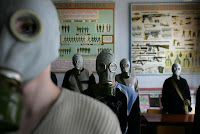









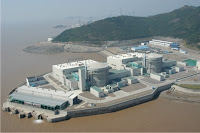




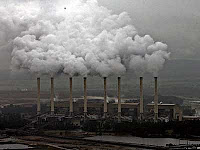


































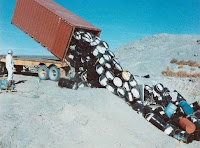























































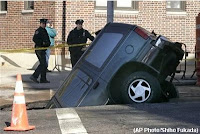












































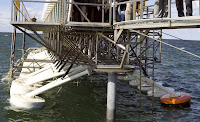





























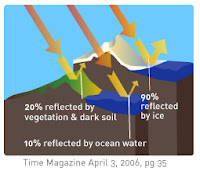















































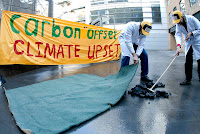








.jpg)








































































